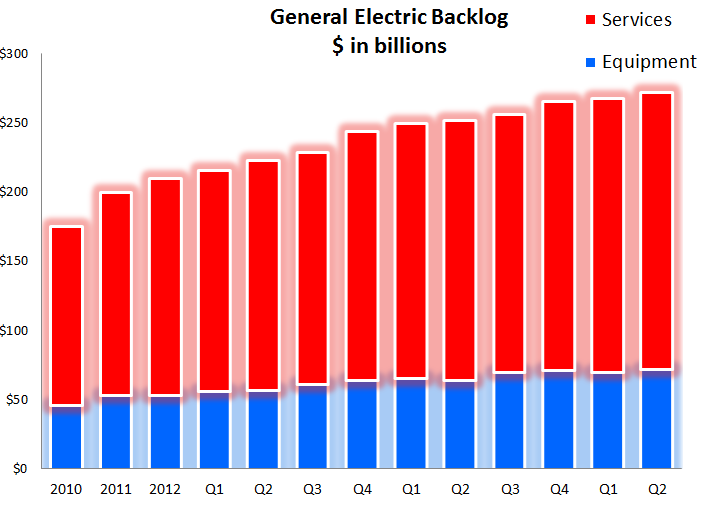Companies that regularly dish out cash to shareholders in the form of a dividend are very intriguing options for your portfolio. Dividend stocks are historically less volatile in general than non-dividend stocks, and the dividend payout itself is historically less volatile than earnings per share because companies dread the backlash from cutting or eliminating a dividend.
Add to those positive factors the power of compounding. Investors can reinvest their dividends for additional shares, which produces incrementally more dividends over the long term. It's no wonder that dividend stocks are popular and lower-risk investments.
Here are two great low-risk dividend stocks that, despite a rough year, could be a cornerstone for just about any portfolio going forward.
General Electric (GE +0.99%)
General Electric actually provides a near-perfect example of how dividends can help turn a stock lagging the S&P 500 index into a stock that provides market-beating gains. Just take a look.
While GE's stock price has traded flat since 2014 because it consistently dished out dividends to shareholders, its total return managed to beat the market. The good news for investors is that GE continues to refocus its business on its industrial roots -- which now contribute nearly 90% of total profits as of the second quarter -- and less on its volatile GE Capital finance business. It's a strategic change that will make GE a low-risk dividend stock for investors compared to when its higher-risk finance business generated roughly half of the company profits in the years leading up to the great recession.
So far, the move is paying off, with both revenue and margins improving. For the first half of 2015, GE's total organic growth checked in 4% higher, with 6 out of 7 industrial segments moving higher. Also, the second quarter marked the eighth consecutive quarter of GE's industrial segment growth.
Looking specifically at the second quarter, GE's gross industrial segment margins improved 60 basis points, to 26.6%, compared to last year. GE's operating margins took an even better 70-basis-point jump, to 16.2%, compared to last year.
Looking beyond GE's well-balanced industrial portfolio, which is growing organically and increasing margins, the company's backlog of orders provides a cushion of revenue safety for investors.

Chart by author. Data source: General Electric's Q2 2015 presentation.
Currently, with GE's $0.23 quarterly dividend payout pushing its yield to 3.5%, investors won't likely have another dividend increase announced until late 2016. However, GE is an excellent low-risk dividend stock, as management continues to refocus its business, increase margins, and add to its enormous backlog of orders.
Procter & Gamble (PG 0.33%)
This pick might surprise many investors, since the stock price has declined nearly 19% year to date. Part of that is due to slowed growth, as the company operates in the competitive consumer products industry.
The company recently checked in with a sixth consecutive quarter of falling sales, and a strong dollar has been a headwind, as P&G generates about 60% of its sales overseas. On top of that, CEO Alan Lafley will soon be replaced with David Taylor, a 35-year company veteran.
It hasn't been a fun couple of years for Procter & Gamble investors, but here's the thing: In my opinion, all the negativity seems to be priced in, and the company is nearly complete with refocusing its number of brands. PG has been cutting costs and selling underperforming assets, which has slashed its number of brands to about 70 from what was once 180 brands.
The next couple of quarters will continue to be bumpy, but the dust is beginning to settle on the company's plan to shed brands and refocus on core businesses. In fact, despite shedding so many brands, the company expects to keep about 90% of its revenue levels, and 95% of its profits.
Another reason this is a low-risk investment going forward is that the company flat-out prints money for investors -- P&G has more free cash flow annually than many public companies have in total market capitalization.

Chart by author. Data source: PG investor presentation and FY Q4 2015 presentation.
By consistently generating such high free cash flow, the company has the ability to pay out significant and safe dividends. Procter & Gamble recently raised its dividend for the 59th consecutive year to a quarterly amount of $0.66 per share, for a yield of roughly 3.5%.
P&G is a Goliath company that prints money. When the dust settles on its shedding of businesses, this could prove to be a steal of a stock price two to four years from now.








